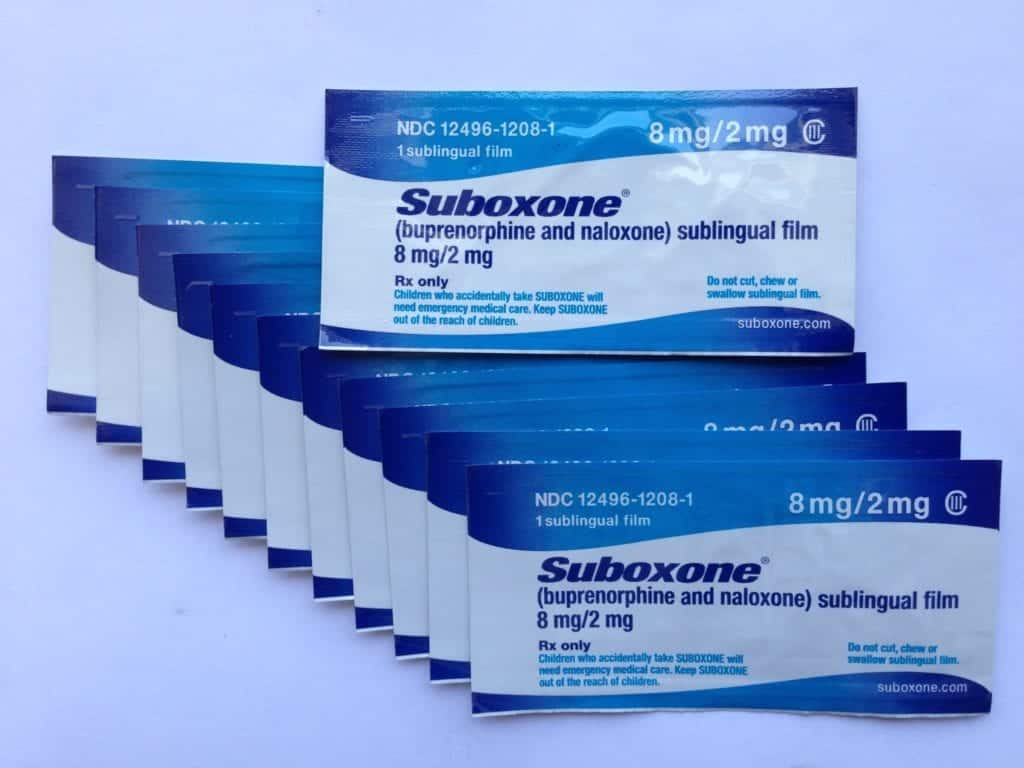Opioid addiction and abuse have claimed more lives in the US than the Vietnam War, and it continues to devastate whole neighborhoods and communities across the nation.
One reason behind this deadly epidemic is that opiate derivatives are extremely difficult to quit. They’re also some of the most incredibly dangerous drugs around.

Luckily, Suboxone detox centers can provide the help and relief needed. Through detox programs like this, thousands of people have received the support and strength they need to abstain from opiate use and achieve a full recovery.
Keep reading to learn more about Suboxone, how it works, and the risks involved.
Table of Contents
- 1 What Is Suboxone?
- 2 How Does Suboxone Treat Opioid Addiction?
- 3 How Is Suboxone Taken?
- 4 How Long Does Suboxone Stay in Your System?
- 5 Suboxone Side Effects
- 6 How Can Suboxone Be Abused?
- 7 Can Suboxone Be Addictive?
- 8 Getting Treatment for Suboxone Addiction
- 9 How to Find Suboxone Treatment Centers Near You
- 10 Suboxone Withdrawal Symptoms
- 11 A Final Note
What Is Suboxone?
When someone suffers from an opioid addiction, whether street drugs or prescription opiates, their body becomes physically, emotionally, and psychologically dependent upon them.
This makes getting sober a real challenge. It can also deter individuals from getting the treatment and help they need for their opioid addiction.
This is where Suboxone can help.
Suboxone is a type of brand-name prescription medication used to treat opioid use disorders (OUDs). Approved by the FDA in 2002, it’s now part of a medication-assisted treatment (MAT), which helps ease the challenges of opioid dependence and addiction treatment.
According to the World Health Organization (WHO) and the US Department of Health and Human Services, Suboxone is a safe and trusted first-line type of treatment for opioid addiction.
That said, it’s important to note that Suboxone isn’t enough on its own to help individuals recover from substance use disorder. It’s used alongside additional forms of treatment like individualized therapy, group counseling, and Cognitive Behavioral Therapy (CBT) to ensure a more comprehensive approach to recovery.
How Does Suboxone Treat Opioid Addiction?
Suboxone works in a similar manner as methadone, which also helps relieve severe withdrawal symptoms.

Yet, while methadone is a long-acting full opioid agonist, Suboxone is a slightly milder version. It contains a combination of two classes of medications: the partial agonist buprenorphine and the full agonist naloxone.
There are other drugs similar to Suboxone used to treat opioid dependence and help ease intense symptoms of opioid withdrawal., chiefly Subutex and Vivitrol. The only difference between them is in their chemical composition.
For example, Subutex only contains buprenorphine without the naloxone, whereas Vivitrol contains the drug naltrexone alone without any additional medications.
Buprenorphine
Buprenorphine is a partial opioid agonist. This chemical works by mimicking the actions of certain hormones or neurotransmitters. When they bind to specific receptors in the brain, they activate them, which then produces a certain biological response.
Considered to be a mild narcotic, Buprenorphine has a similar influence on the body as that of full opioid agonists, such as heroin or methadone, but with a milder efficacy.
Buprenorphine is used to reduce the majority of withdrawal symptoms, mainly drug cravings.
Naloxone
Naloxone is used to reverse an overdose caused by opioids and is referred to by medical professionals as an opioid antagonist. It’s a fast-acting chemical often used on its own during emergencies to undo the harmful effects of overdosing.
During the detox process, naloxone is used as part of a medical-assisted treatment protocol. It helps create a partial blockade against the effects of opioids. Thus, they’re no longer capable of releasing their effects into the bloodstream.
How Is Suboxone Taken?
Suboxone is available in two forms: buccal strips or sublingual tablets. It’s not meant to be swallowed but rather dissolves in the cheek or underneath the tongue. This means it doesn’t pass through your digestive system nor does your liver have to process the medication.
Your physician will likely choose one type over the other based on your individual needs and preferences. Yet, some people prefer the sublingual tablets because they cost less than the strips. Plus, many users prefer the taste of the tablets over the strips and find it easier to hold them in place under their tongue.
- Buccal Film Strips: involves placing a film strip between the gums and cheek and letting it dissolve.
- Sublingual Tablets or Film Strips: involves placing the strip form or tablet underneath your tongue and letting it dissolve.

How Long Does Suboxone Stay in Your System?
The effects of Suboxone kick into effect after about 20 to 45 minutes after administration with the main ingredient, buprenorphine, usually taking anywhere between 3–4 hours to reach maximum effect in the blood
It’ll remain effective at blocking opiates and relieving withdrawal symptoms for a full 24 hours after administration. With some people, its effects can last even longer, up to 72 hours in some cases. The duration depends on a number of factors, such as metabolism, weight, and history of drug abuse.
After that, the drug will stay in your system for an average of 5–8 days. Regardless, patients are prescribed one Suboxone per day after the initial dosage.
Depending on their personal needs, each patient will have their own timeline as to how long they should keep taking Suboxone. Some people need it for only a few months while others may continue to take it for up to a year, maybe even longer.
Suboxone is available in four different strengths. Your physician or healthcare provider will prescribe the lowest dose of Suboxone required for maximum benefit and efficacy.
- 2.0 mg buprenorphine with 0.5 mg naloxone
- 4.0 mg buprenorphine with 1.0 mg naloxone
- 8.0 mg buprenorphine with 2.0 mg naloxone
- 12 mg buprenorphine with 3.0 mg naloxone
Suboxone Side Effects
Like other types of medication, Suboxone has some common side effects. Here are a few you might experience:
- Constipation
- Insomnia
- Fatigue
- Nausea
- Sweating
- Dizziness
- Body aches

How Can Suboxone Be Abused?
The ‘misuse’ of Suboxone often happens because patients feel their withdrawal symptoms are too difficult to handle. So, they begin to take more than they were prescribed to help ease the cravings and other symptoms.
Some people also resort to taking other drugs in combination with Suboxone as a way of tapering out from withdrawal with minimal symptoms. However, this will only end up doing more harm than good, increasing the risk of relapse or even becoming addicted to Suboxone.
Furthermore, the FDA warns about mixing opioid medication, such as Suboxone, with alcohol and or other drugs, mainly depressant drugs known as benzodiazepines.
When combined, they increase the risk of serious side effects of Suboxone. They also magnify the impact opioids have on the body and the central nervous system. Thus, individuals are advised against using other opioids when taking Suboxone as it’ll set back recovery and increase the risk of relapsing.
Another way people can abuse Suboxone is that they crush the pills or tablets and then snort them. Others dissolve the film strips and then inject them directly into the bloodstream.
Can Suboxone Be Addictive?
Suboxone is a prescription drug that contains low levels of opioids. On its own, it’s not harmful nor poses any high risk of being addictive.
Because it’s classified as a Schedule III controlled substance, it’s not easy to get Suboxone if you’re not receiving treatment in a rehab center or doctor’s office.
That said, like any other opiate, Suboxone can be harmful when larger doses than what was originally prescribed or for a longer duration. In cases like this, it can become easy to get hooked.
Those who misuse the drug become physically dependent on it just as if they were using heroin or oxycodone. Instead of using it to treat their addiction, they use it to switch out one chemical dependency for another.
According to a recent study, nearly 60% of participants said that they used Suboxone to help them refrain from using other drugs. Half of the study sample said their primary motive for using it in the first place was pain relief, while a third of those who took part in the study said they used Suboxone to help them deal with various psychological issues.
Getting Treatment for Suboxone Addiction
The aim of any detox program is to provide patients with the coping mechanisms they need to live without the abused substance, which in this case is Suboxone.
This means finding a reputable treatment facility, preferably one that’s local where you’ll be encouraged to sign up for an inpatient treatment program. This includes a broad range of therapies, various individualized treatment options, and, most importantly, 24/7 medical care. Combined, they work to ensure long-term recovery from substance use disorder.
Most people complete their detox treatment in about two weeks. Yet, this depends mainly on how long they were misusing Suboxone as well as the amount they were taking.

How to Find Suboxone Treatment Centers Near You
We rounded up a few things you need to consider in order to find the best place to treat your Suboxone addiction.
1. Figure Out What Your Personal Needs Are
There are, no doubt, plenty of treatment providers available in your area. The trick is finding the one that best fits your needs.
The best way to do that is to assess your priorities and what you’re looking for in a rehab center.
2. Talk with Your Physician
Going through Suboxone detox can be overwhelming. Reaching out to your physician or a medical professional can provide insight into what to expect, the type of treatments, and the level of care.
They may even be able to put you in touch with a program that specializes in helping people who suffer from Suboxone addiction.
3. Research Local Suboxone Treatment Centers
Look up all the treatment centers in your area as well as their social media presence. Read reviews from current and previous patients to get an idea of what they’re saying about their experience there.
While you’re at it, check to see whether the facility is accredited by The Joint Commission. If it is, then your next step is to schedule a tour to get a feel for the place.
Suboxone Withdrawal Symptoms
Although Suboxone is designed to help individuals break free of their opioid habit, it can itself become addictive for some. This usually happens when they take it for longer or in higher doses than originally prescribed by their physicians or healthcare providers.
In cases like this, it’s possible to suffer from symptoms of Suboxone withdrawal, mainly because of the naloxone.
The most common type of withdrawal process is called precipitated, which is a direct result of the way Suboxone affects the body’s opioid receptors. Precipitated withdrawal occurs when a patient begins using Suboxone before their body has reached the first stage of opioid withdrawal symptoms.
Taking it before this stage will force the body into intense physical symptoms, delaying the onset of treatment. It can also affect the rate of success of the whole process. These symptoms usually kick in around 30 minutes after administration. They can last anywhere between several hours to a full day.
The best way to avoid this type of withdrawal is to speak with your physician. If they determine that there’s enough evidence of opioid withdrawal, then they’ll likely recommend that you begin Suboxone treatment at once.
They may even begin you on low doses to avoid withdrawal. After that, they’ll gradually increase the dose and combine it with other forms of treatment as you proceed with your recovery process.
Some common physical and psychological symptoms of precipitated withdrawal include:
- Abdominal pain
- Headache
- Diarrhea
- Low blood pressure
- Muscle aches
- Flu-like symptoms like fever and runny nose
- Nausea and vomiting
- Anxiety
- Stress
- Depression

A Final Note
Finding the right treatment is the first step in recovering from opioid use disorder. As part of the medication-assisted treatment patients receive, Suboxone is usually one of the first steps in the healing process.
However, there have been instances when this treatment drug was itself misused. Whether it’s a result of taking it for longer than prescribed or taking it in larger doses, either way, addiction to suboxone can be just as difficult to recover from as any other.
Luckily, many Suboxone detox centers are available to provide the help and support needed to get through this difficult time safely and comfortably.
Please call Allure Detox today to learn more about Suboxone addiction treatment near you!



